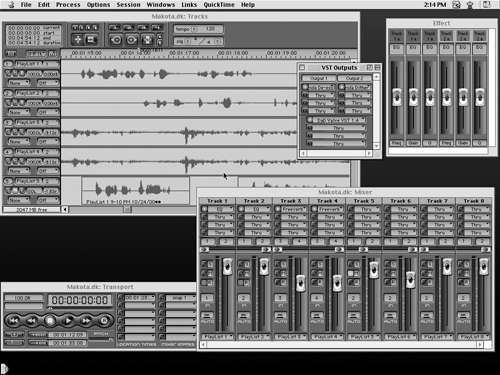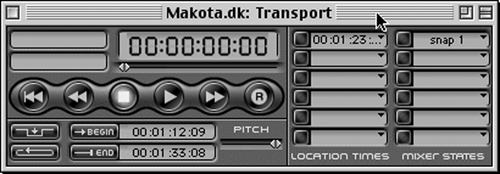FIRING IT UP
When you select New from the File menu, Deck creates a new session file and folders for audio files and fades. A Deck session is a Mac document that does not contain audio files, but instead contains pointers to audio files on your hard drive. Although Deck supports sample rates from 22.050kHz to 48kHz, be aware that 32kHz is not supported if you bring in digital audio from DAT, MiniDisc or other digital source. As you record, Deck saves mono sound files in the Sound Designer II format (the same format ProTools uses). If you add any other types of sound format files such as .AIFF or .WAV, Deck converts them to SDII format at a supported sample rate.

Deck’s layout is simple and fairly uncluttered, although two monitor windows can come in handy if you plan to use many tracks and perform large mixes (see figure 1). To perform the basic functions in Deck you will be frequently using three application windows — Transport, Track, and Mixer.

The Transport window (see figure 2) has the usual compliment of buttons and a large counter. Below these are buttons to enable automatic punch-in and -out and looping, and begin and end indicators for these functions. On the right side, you’ll see two sets of six pop-up menus. The six pop-ups on the left are Deck’s Location Time buttons. Each of these six pop-up menus gives you access to the full list of all location times you have ever stored for the current session. The buttons directly to the left of each menu snap your recording to the desired location time. The right-hand column of pop-ups are scene memories for the mixer. These memories store the complete state of all faders and pans. Once again, the buttons to the left of the pop-ups snap the mixer to the desired state.
